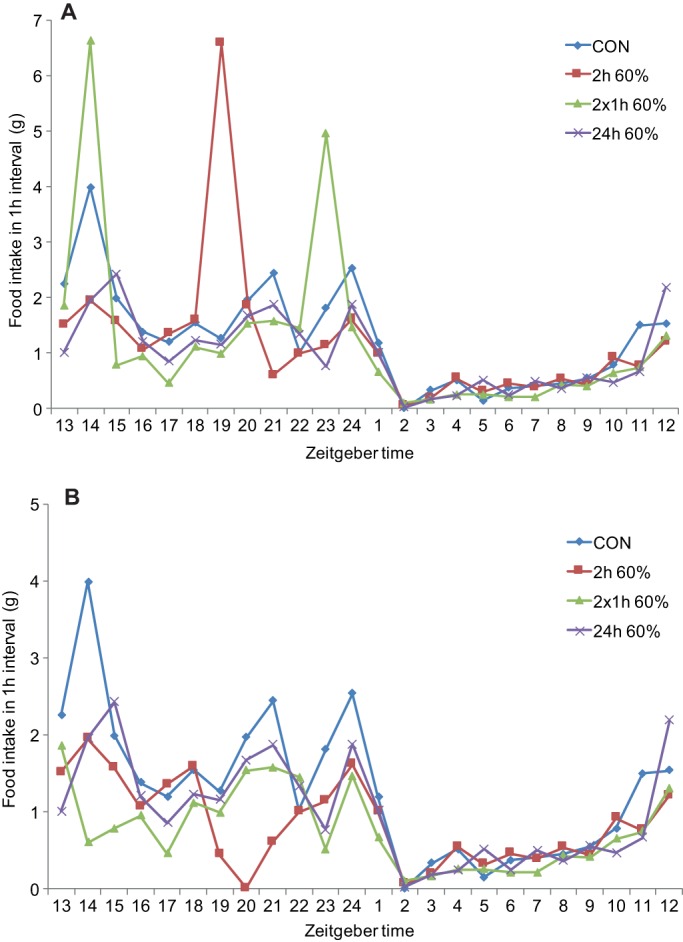Fig. 2.

Computerised food-intake monitoring from a binge-like eating study. This figure illustrates findings based on unpublished data (T. Bake, D. G. A. Morgan and J.G.M.). Rats were given ad libitum access to: chow (CON); a 60% high-fat (HF) diet for 24 h per day (24 h 60%); or continuous access to chow and scheduled access to HF diet for 2 h in the dark phase, as either a single 2 h period (2 h 60%) or as two 1 h periods (2×1 h 60%). (A) Shows weight of food consumed, including from HF diet during scheduled feeding. (B) Shows food intake, excluding that from HF diet during scheduled feeding. These results show that: (1) intake is heavily nocturnal (ZT13-ZT24; zeitgeber time 0 is lights on in a 12:12 h light:dark phase that entrains biological rhythms) under all regimes; (2) rats given scheduled access to HF diet also consume chow during these periods; (3) rats consume a higher proportion of their daily caloric intake as HF diet when given 2×1 h access compared to a single 2 h scheduled feed; (4) compensatory reductions in chow intake were observed in the HF schedule-fed groups during the dark phase prior to and after HF binge-like eating.
